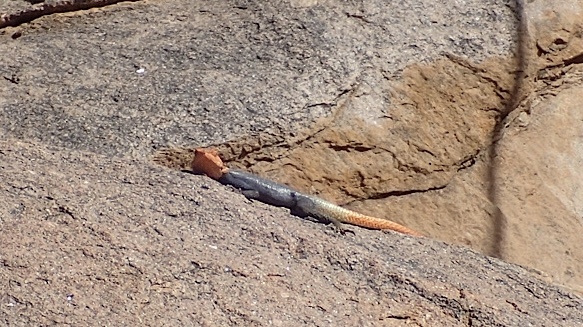We found WiFi! We are now sitting in the most heavenly spot right on the border with Angola, which I’ll tell you about later. For now, back to Swakop –
From Swakopmund we had the choice of the inland (shorter) route or the Skeleton Coast (longer) one. Obviously we chose the latter – the Skeleton Coast being one of THE famous landmarks of Namibia.
The Skeleton Coast was so named due to the treacherous fogs and strong currents, which forced many ships onto the shifting sandbanks. Even if the sailors survived the shipwreck they were unlikely to survive the freezing ferocious sea and the Namib Desert.
The shore used to be known as a ships’ graveyard but, ultimately, the wrecks are broken up and now only a couple remain, also given the advances in GPS navigation technology, which keeps them far offshore. The first one that we saw was the wreck of the Zella, which ran aground on the 25th August, 2008. Luckily, no lives were lost – she was being towed to India for scrap when the towing line broke and she was swept ashore:



Heading north the road is incredibly bleak and feels like you’re driving over a salt pan. In fact, we were really lucky as this road is usually covered in freezing cold fog in the mornings and then gets boiling hot in the afternoons; we had a clear, warm but windy day.

Cape Cross, 140kms north of Swakop (as the locals call it), is known for two things – the place where the first European, Diego Cao from Portugal landed in 1485 and the enormous seal reserve.
Cao’s original cross which he erected to mark his achievement was removed in the 1890’s and is now in the Oceanographical Museum in Berlin. In 1974 a replica cross (or two) was/were erected:



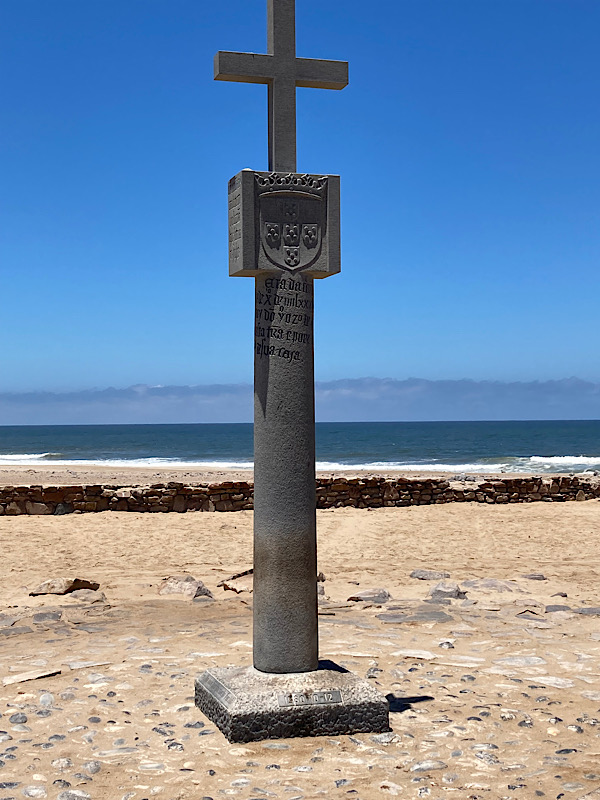
The Seal Reserve has about 100,000 animals and the moment we opened Naomi’s doors, the smell hit us! The next thing to hit us was the noise. Mike and Jolene told us that the literal translation for seal in Dutch is sea dog and this makes total sense – the males sound just like dogs but the babies sound like lambs. We took way too many photographs (and videos!) but it’s just so unusual to be that close to so many seals. Under the boardwalk was clearly prime real estate in the heat of the day and a lot of the mothers were nursing their babies there and were (really quite violently) kicking the big bulls out! The plan was to eat our lunch after seeing the seals but we had to wait half an hour for the smell to subside from our nostrils!
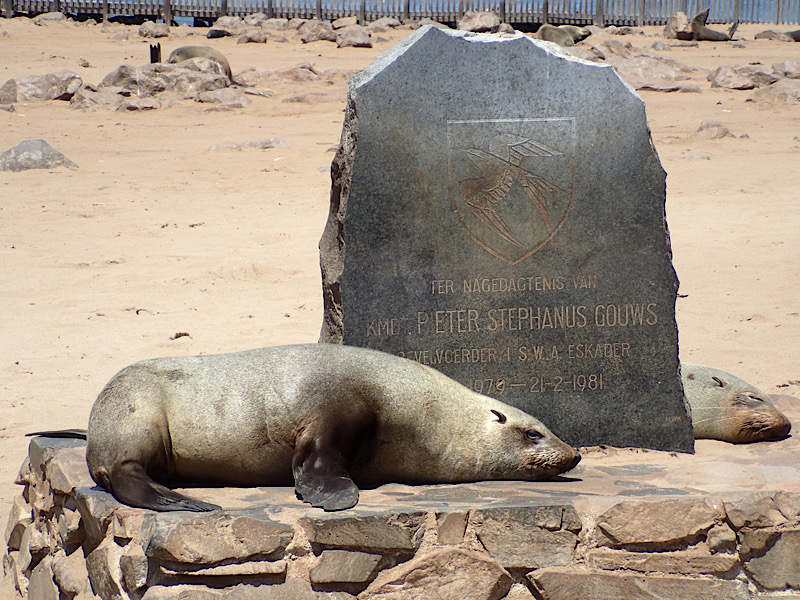

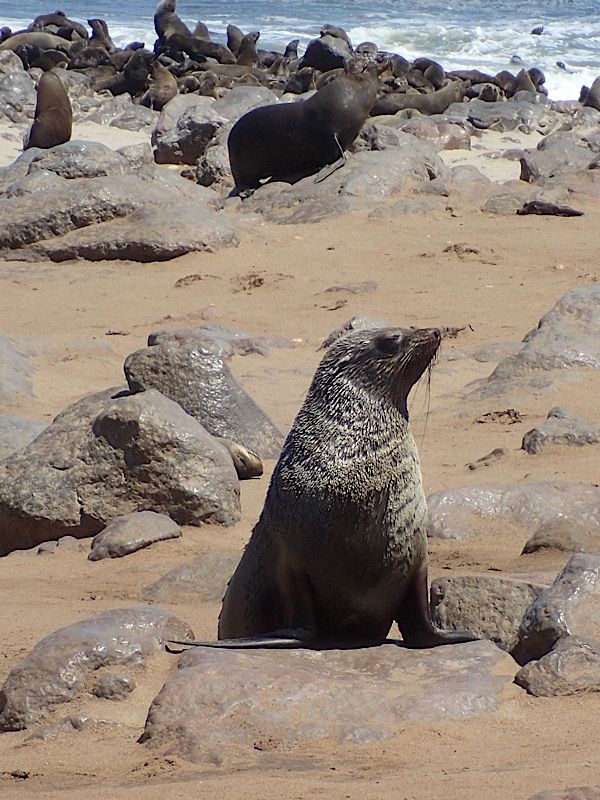








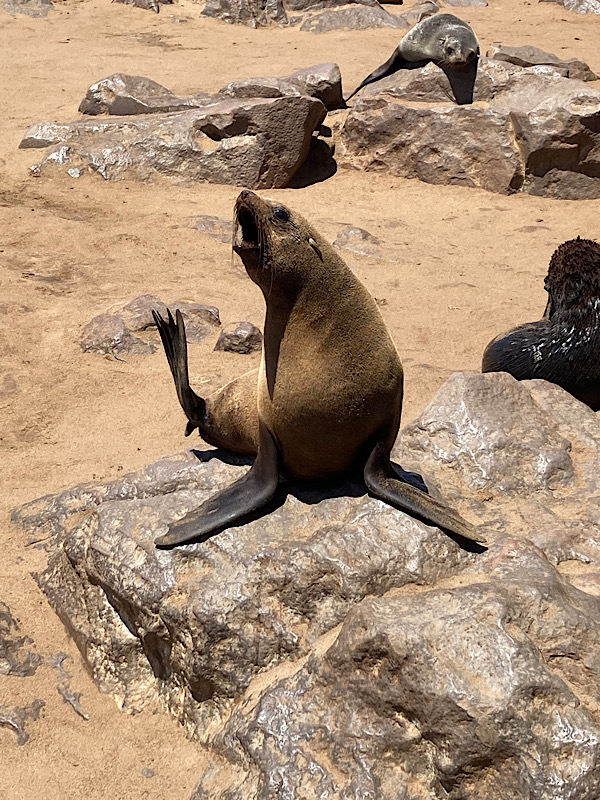
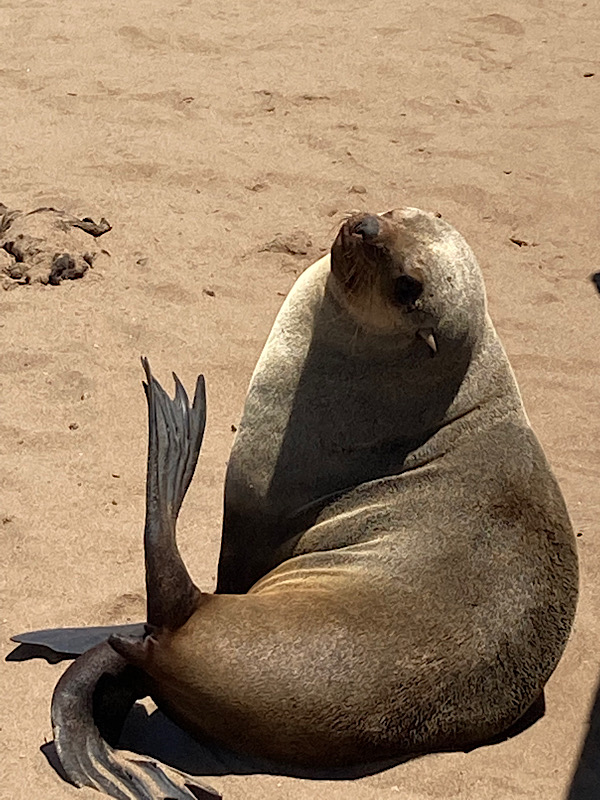

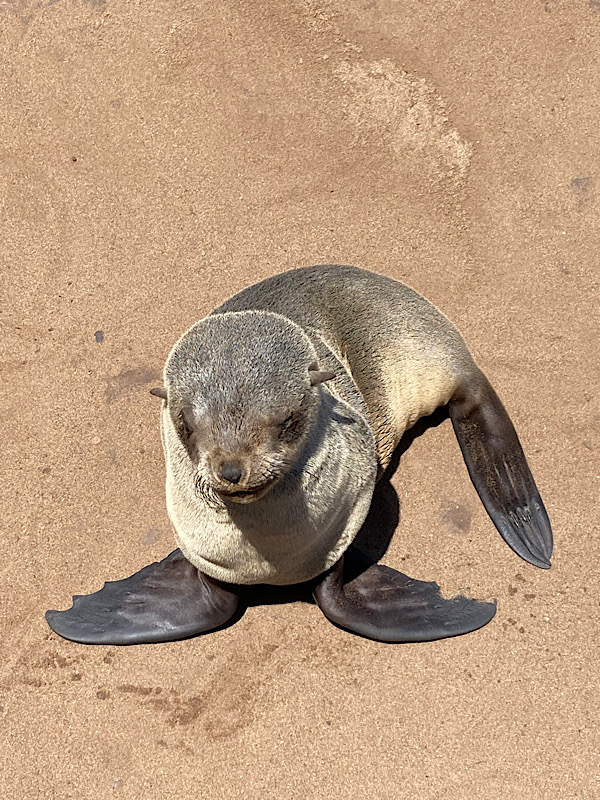

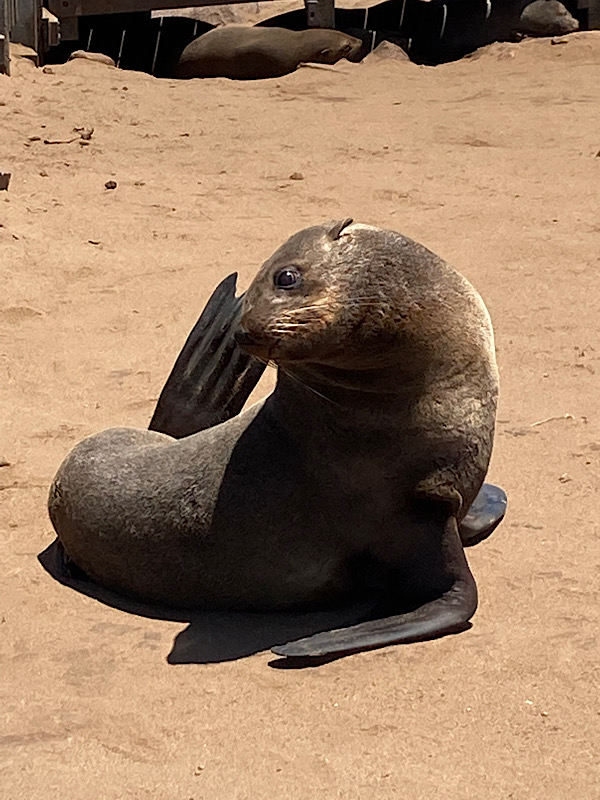
It’s hard to describe just how bleak this coastline is:

The mirage in the distance turned out to be loads of cars on the shoreline belonging to fishermen. I asked one of them what they were catching and he explained that it was a fishing competition – some were catching a fish I’d never heard of and some were after shark. Their lines seemed to be very close to the shore so another good reason (along with the freezing cold water) not to go for a swim!


Entry into the Skelteton Coast National Park was free but they clock you in and clock you out!

The second wreck we came across was the South West Seal, which ran aground in 1976. Sadly (and somewhat appropriately) there was also a skeleton of an actual seal:
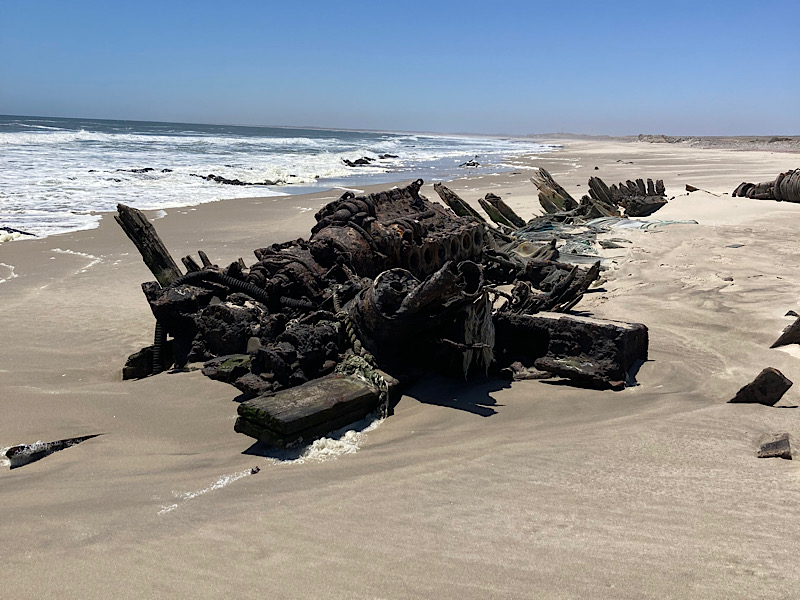

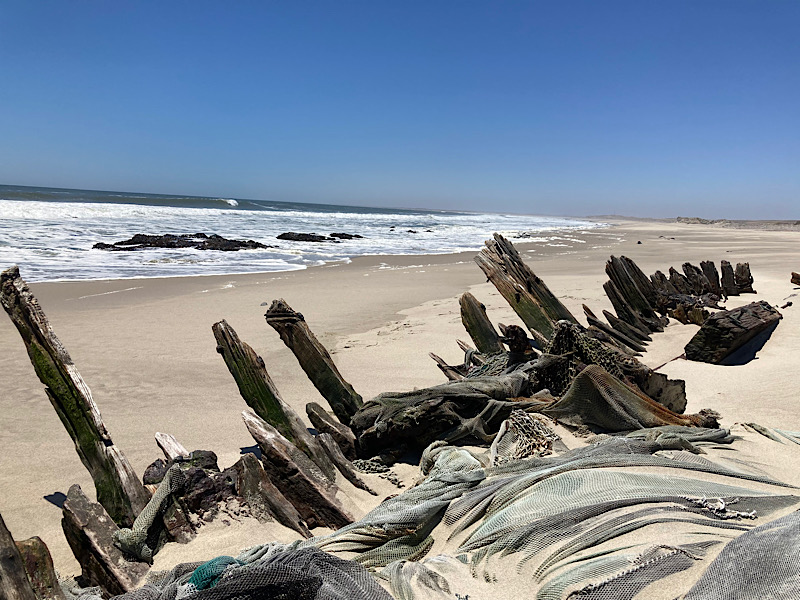




Someone had done a bit of rock art (on the left) so Matt responded with his own effort (on the right) to mess with peoples’ brains #Banksy!


We stopped at the lagoon, which had the most bizarre sign. It worked! We don’t suppose for one minute that there were actually lions there but it did stop us (and the occupants of the other car there) from exiting our vehicles which, presumably, was the aim!

The next heap of metal was an old, rusting old rig – so bizarre!

And so the road went on and on ………..

Eventually we turned inland and the wind buffered us and blew sand across the road, which was “interesting”.
There were melons and then masses and masses of Welwitschia plants (pronounced locally as Velvitschia because (obviously) the Germans pronounce W as V). They were even growing in the rocks and blended in incredibly well:

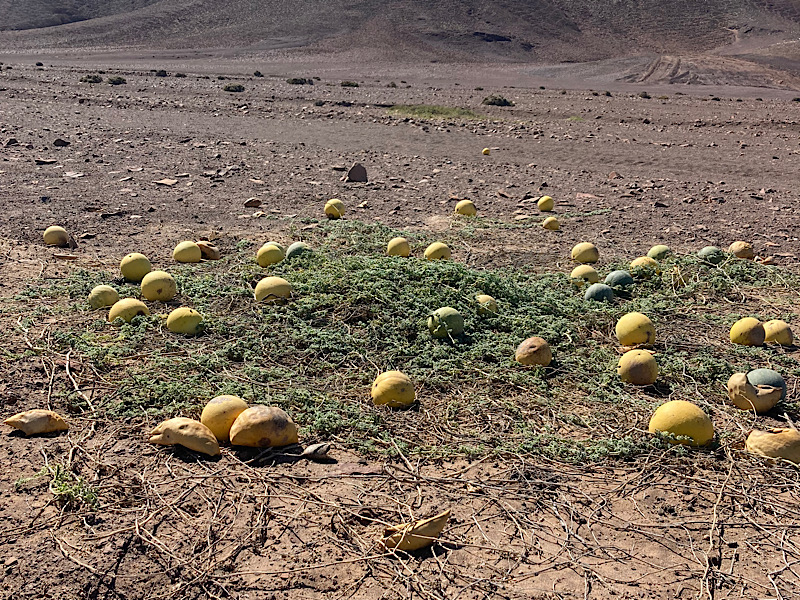



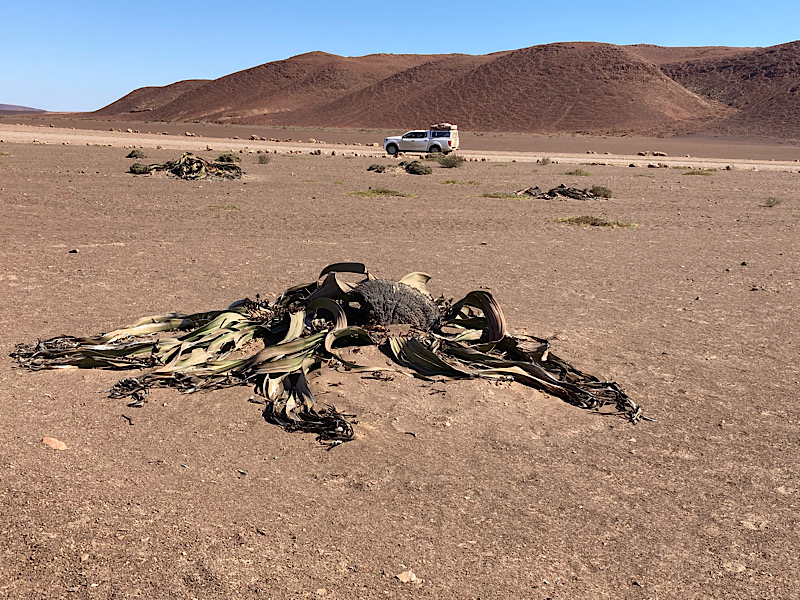



By now we were getting tired and were racing for our campsite (if only we knew!) but the scenery just kept on amazing us time after time:






The campsite, when we finally got there at 7pm, was decidedly “quirky”. We needed to light a fire to get hot water and we’d assumed that wood would be provided. Turns out that barbecue charcoal doesn’t work too well! The “elevated ablution facility” was basically made from mud and chicken wire and Matt was really concerned that he might knock the whole door over! We rapidly agreed that, in the middle of the night, we would not be climbing the rickety stairs! Despite all of that, it was wonderfully quiet but it was the first night that we went to bed without a shower and we were both freezing in the night and discovered in the morning (our camera has an altimeter) that we were at 2,277 feet, which would probably explain it.








The morning bird life (and lizards) were amazing but I, for one, would really have preferred a hot shower! Turns out that hornbills’ beaks are really badly designed for eating bread and Matt’s little friend drinking water from the tap whilst he was on the loo (did I mention that the “elevated ablution facility” had no roof?!) was actually just waiting to have a peck at the contents of the bog brush 🤢



